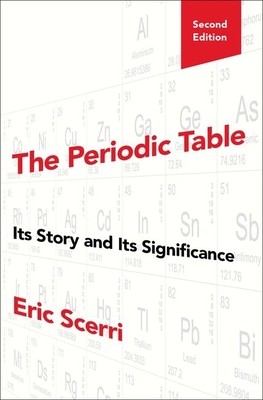
- We will send in 10–14 business days.
- Author: Eric Scerri
- Publisher: Oxford University Press, USA
- ISBN-10: 019091436X
- ISBN-13: 9780190914363
- Format: 15.8 x 23.6 x 3.8 cm, hardcover
- Language: English
- SAVE -10% with code: EXTRA
Reviews
Description
The periodic table of elements is among the most recognizable image in science. It lies at the core of chemistry and embodies the most fundamental principles of science. In this new edition, Eric Scerri offers readers a complete and updated history and philosophy of the periodic table. Written in a lively style to appeal to experts and interested lay-persons alike, The Periodic Table: Its Story and Its Significance begins with an overview of the importance of the periodic table and the manner in which the term "element" has been interpreted by chemists and philosophers across time. The book traces the evolution and development of the periodic table from its early beginnings with the work of the precursors like De Chancourtois, Newlands and Meyer to Mendeleev's 1869 first published table and beyond. Several chapters are devoted to developments in 20th century physics, especially quantum mechanics and and the extent to which they explain the periodic table in a more fundamental
way. Other chapters examine the formation of the elements, nuclear structure, the discovery of the last seven infra-uranium elements, and the synthesis of trans-uranium elements. Finally, the book considers the many different ways of representing the periodic system and the quest for an optimal arrangement.
EXTRA 10 % discount with code: EXTRA
The promotion ends in 16d.15:01:49
The discount code is valid when purchasing from 10 €. Discounts do not stack.
- Author: Eric Scerri
- Publisher: Oxford University Press, USA
- ISBN-10: 019091436X
- ISBN-13: 9780190914363
- Format: 15.8 x 23.6 x 3.8 cm, hardcover
- Language: English English
The periodic table of elements is among the most recognizable image in science. It lies at the core of chemistry and embodies the most fundamental principles of science. In this new edition, Eric Scerri offers readers a complete and updated history and philosophy of the periodic table. Written in a lively style to appeal to experts and interested lay-persons alike, The Periodic Table: Its Story and Its Significance begins with an overview of the importance of the periodic table and the manner in which the term "element" has been interpreted by chemists and philosophers across time. The book traces the evolution and development of the periodic table from its early beginnings with the work of the precursors like De Chancourtois, Newlands and Meyer to Mendeleev's 1869 first published table and beyond. Several chapters are devoted to developments in 20th century physics, especially quantum mechanics and and the extent to which they explain the periodic table in a more fundamental
way. Other chapters examine the formation of the elements, nuclear structure, the discovery of the last seven infra-uranium elements, and the synthesis of trans-uranium elements. Finally, the book considers the many different ways of representing the periodic system and the quest for an optimal arrangement.


Reviews